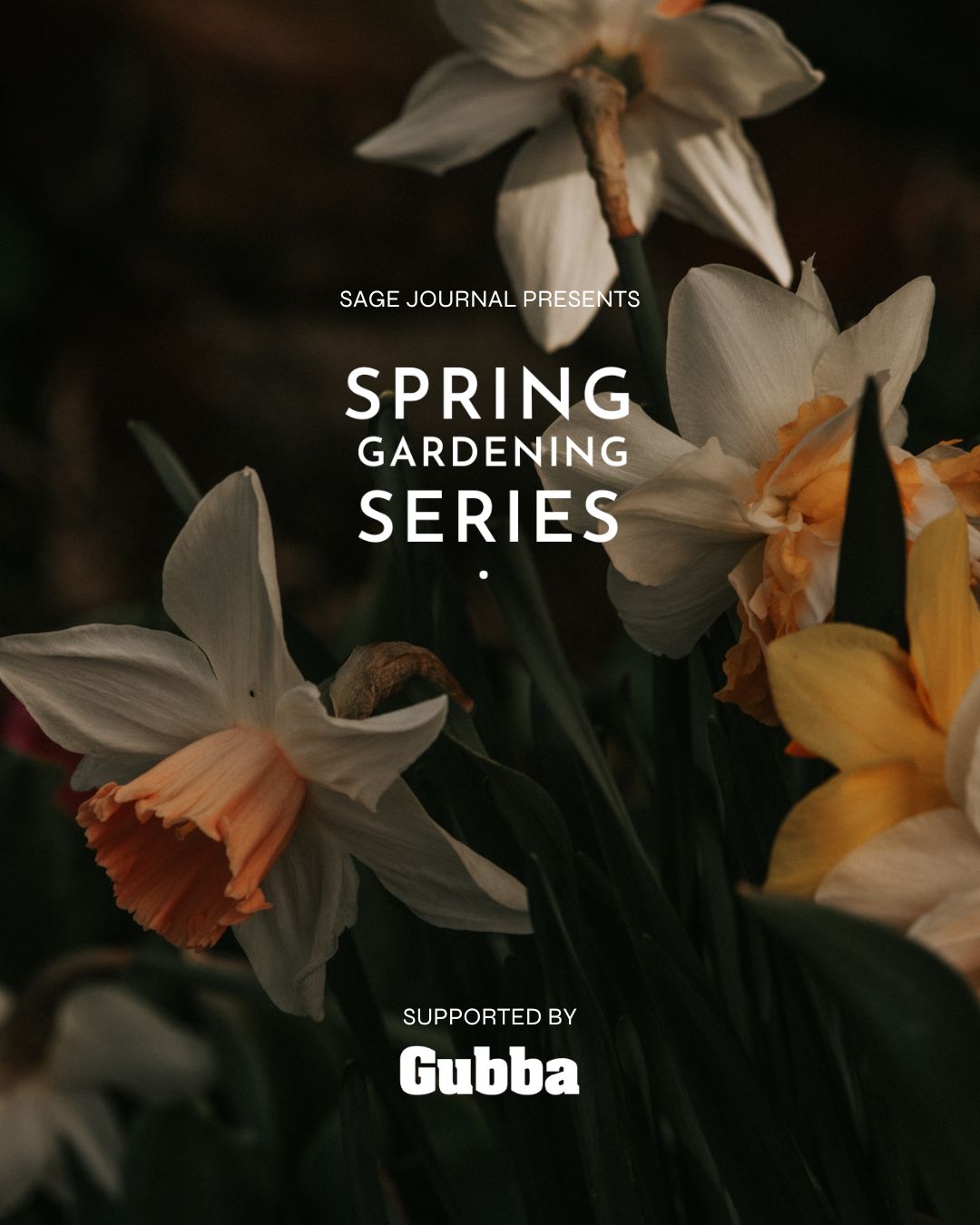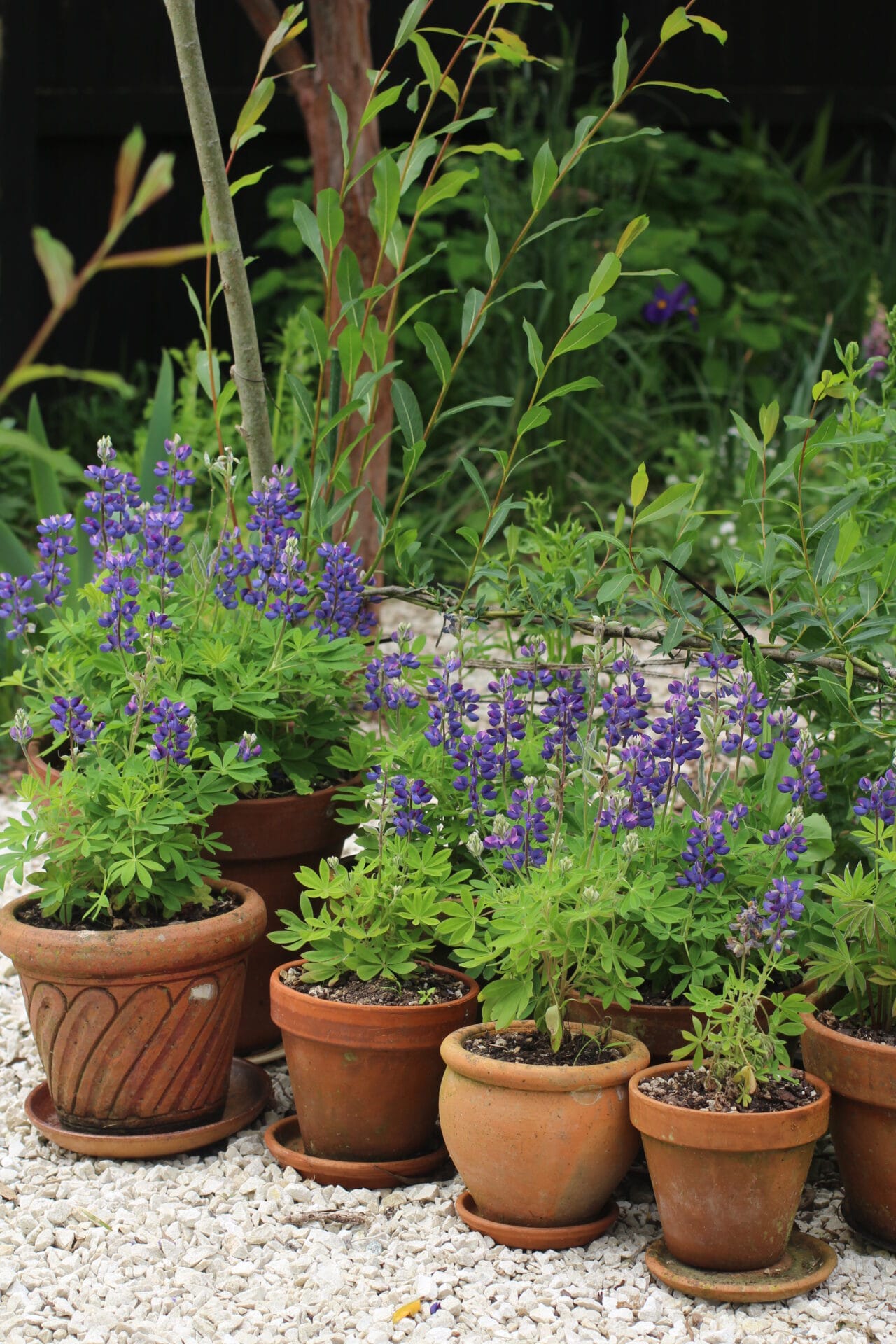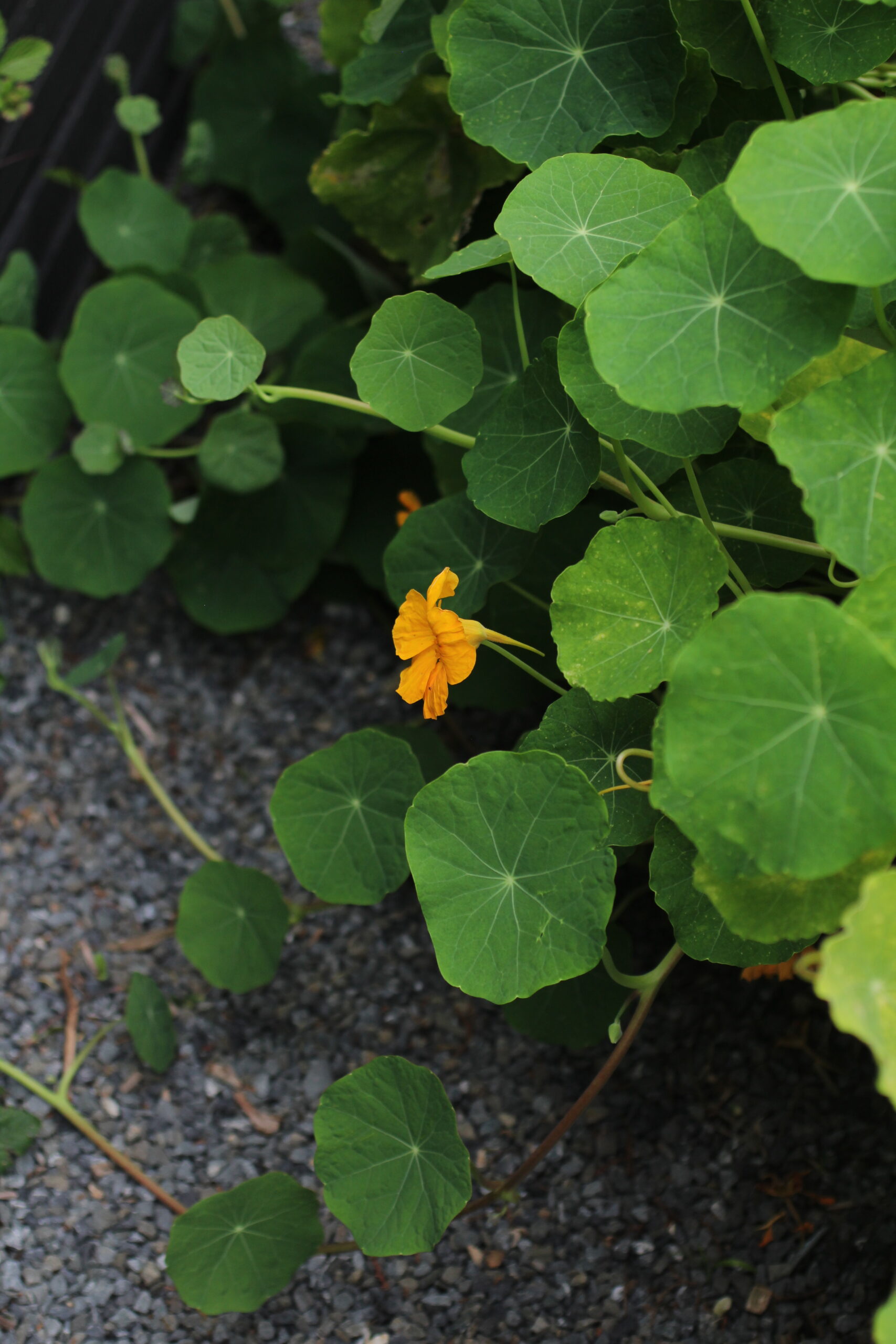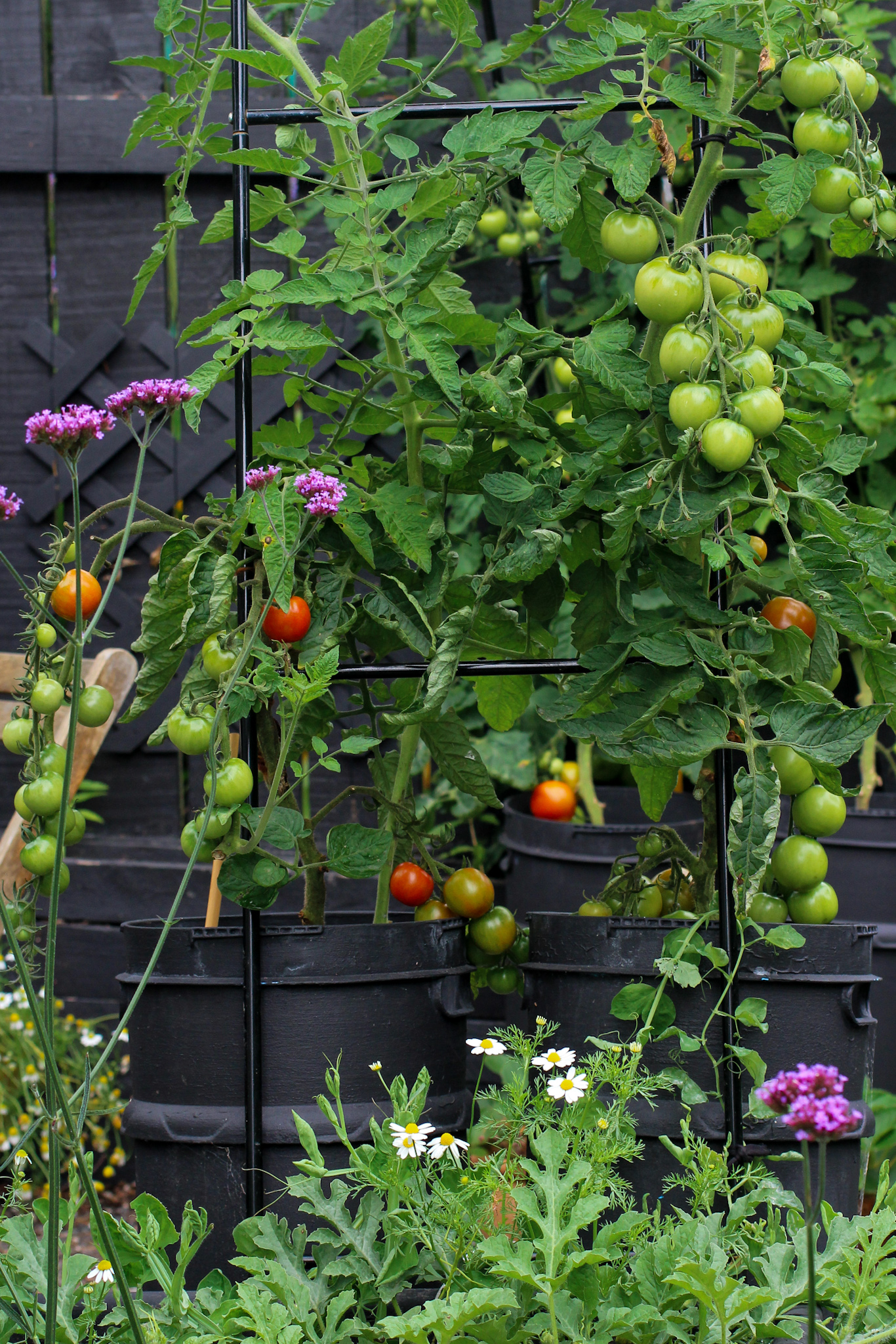Your cart is currently empty!
10 border plants to add to your garden this spring
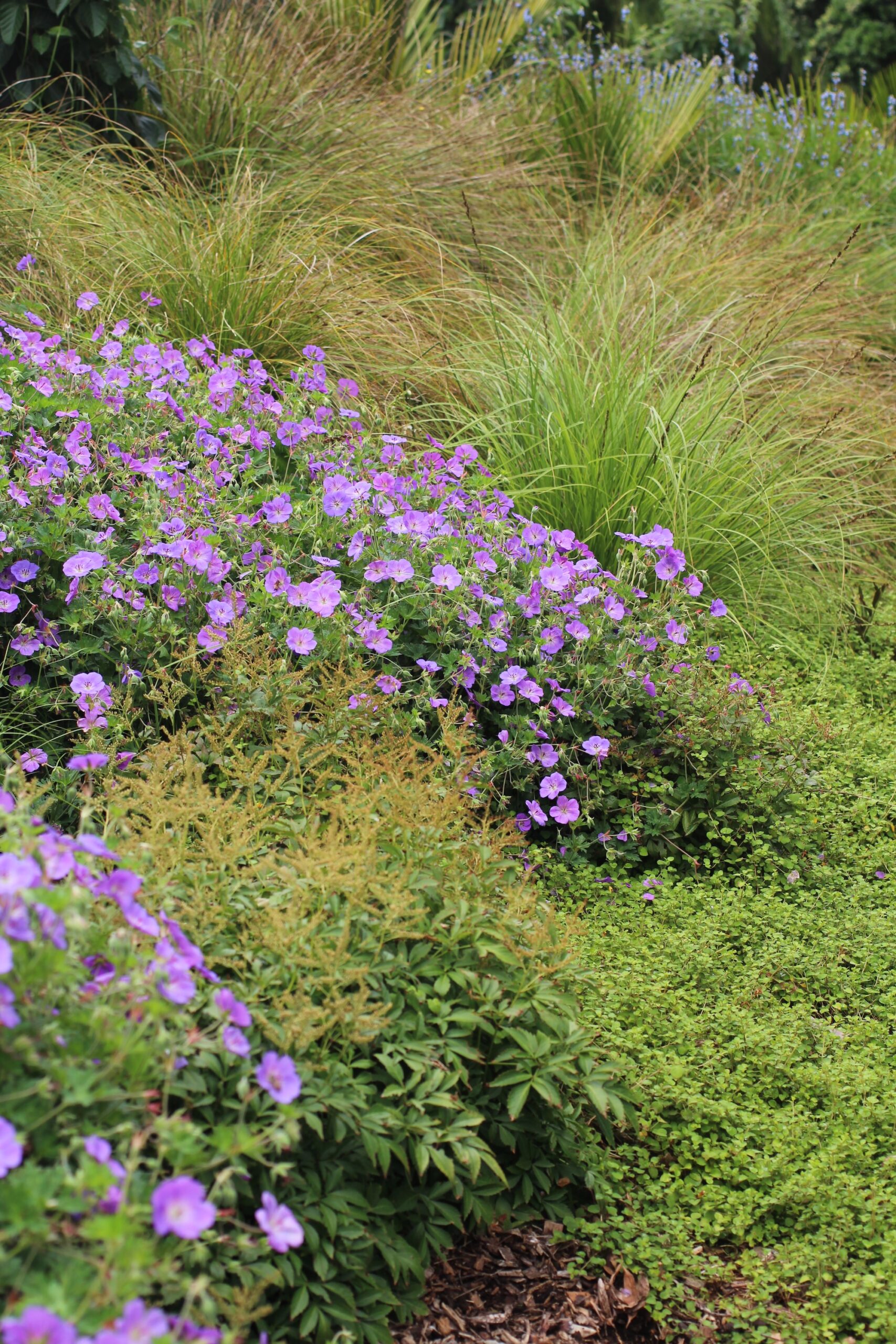
10 border plants to add to your garden this spring
A selection of reliable front-border plants to fill the gaps in your spring garden + what to pair them with. Written by Elly Keen (@daydream.green)
The 2025 Spring Gardening Series is supported by Gubba Garden Store.
It’s October in the garden and as we head into mid spring, you may have noticed your borders filling out with lush new growth thanks to the extra warmth + moisture hanging around.
At this time of year, signs of a tough winter may become glaringly obvious. Herbaceous perennials are known as the backbone to any good border – reliable and hardworking. However, if you have experienced a particularly cold or wet winter, you may have found some big gaps appearing where dormant perennials have not survived the colder months.
If you are a newcomer to the gardening world, you might find this fact discouraging. But it’s important to look at these casualties in a new light, and learn which plants thrive in your conditions and which don’t. After all, gardening is all about experimentation, and when one plant fails, it opens the doors for many more opportunities to fill the space.
In this article, we share with you a list of tried-and-true, front-of-the-border plants. These are tough and hardy, and will fill gaps in your border quickly to avoid those unsightly weeds that seem ever so present at this time of year. When planted during mid spring, you will have a plant packed border come summertime.
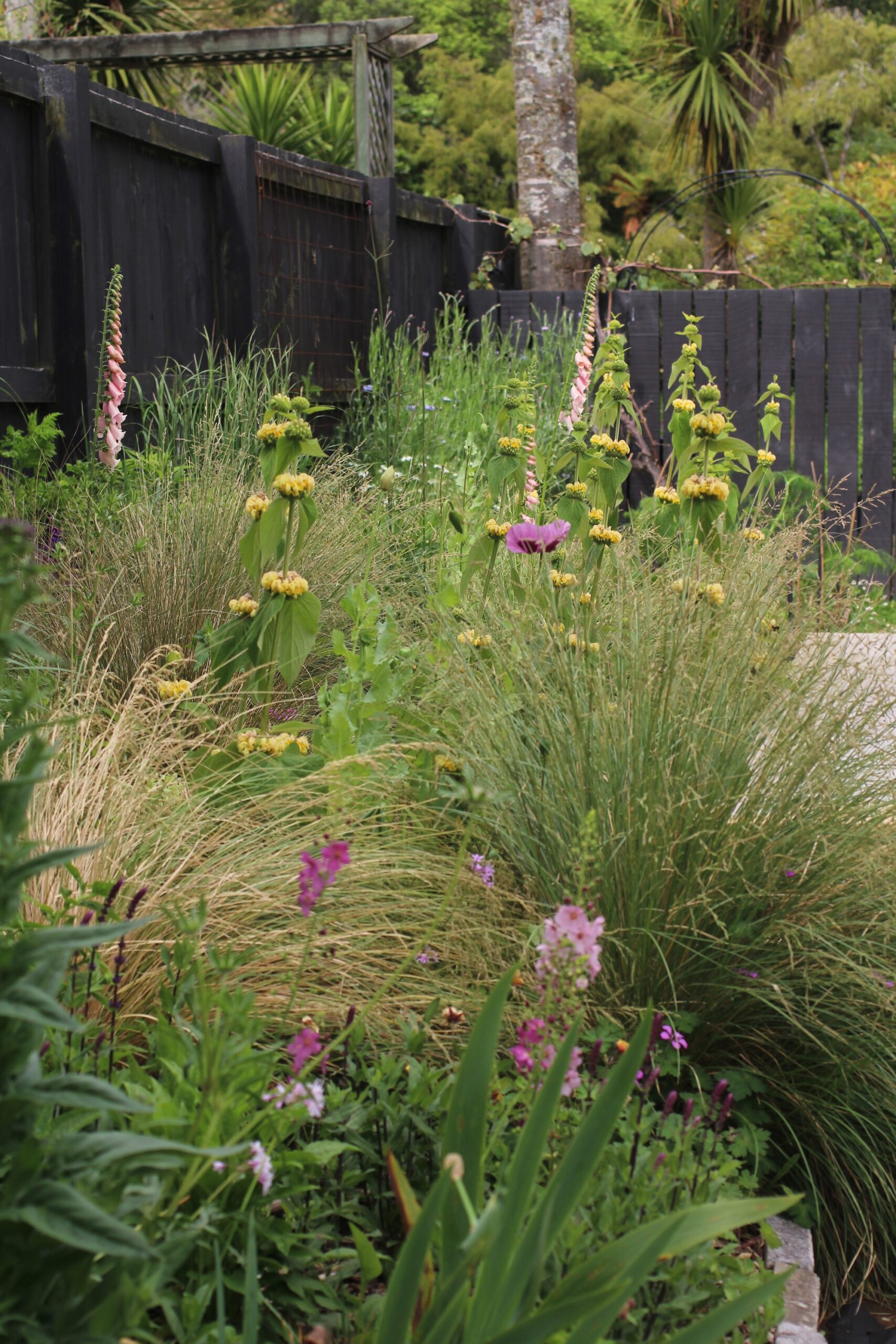
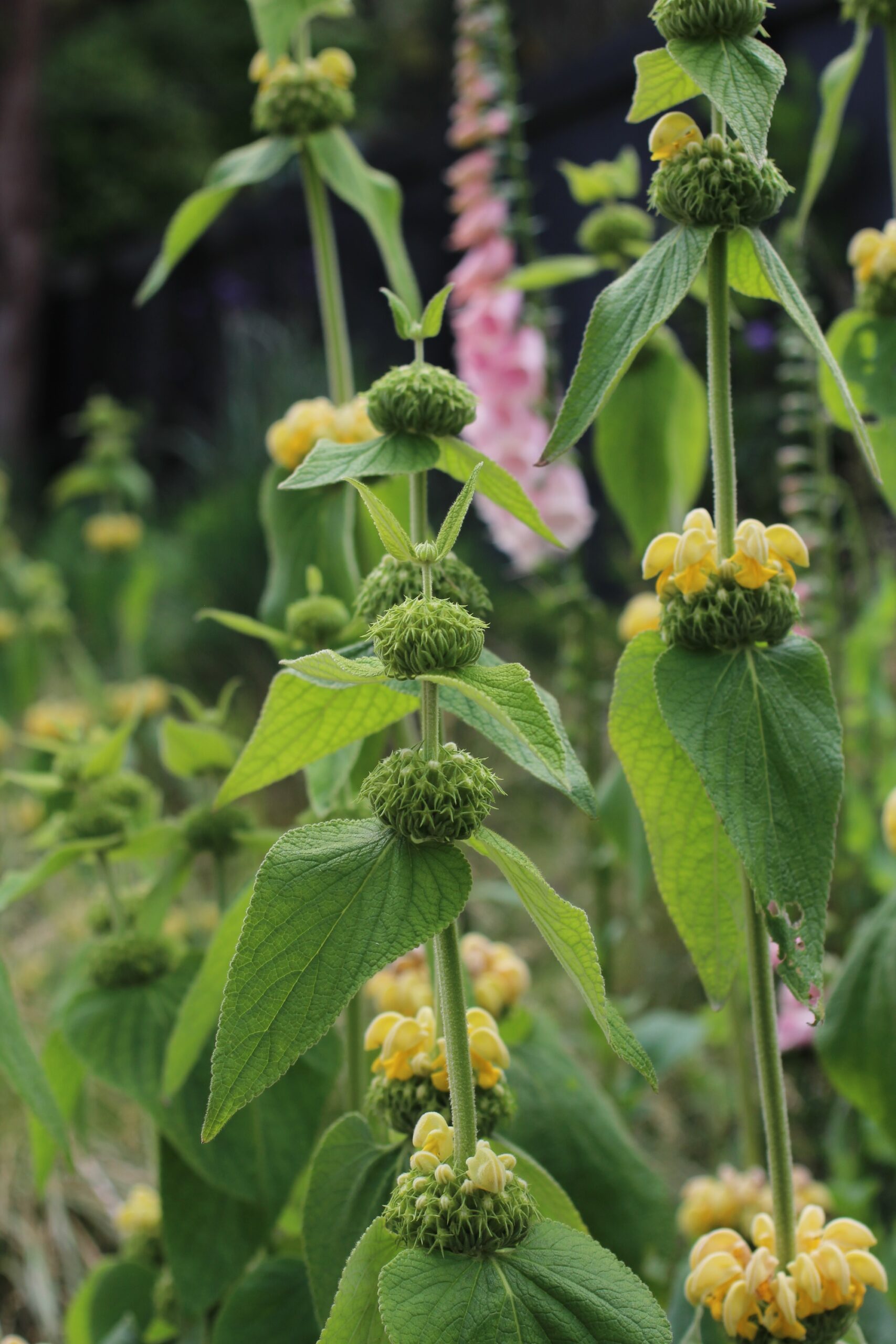
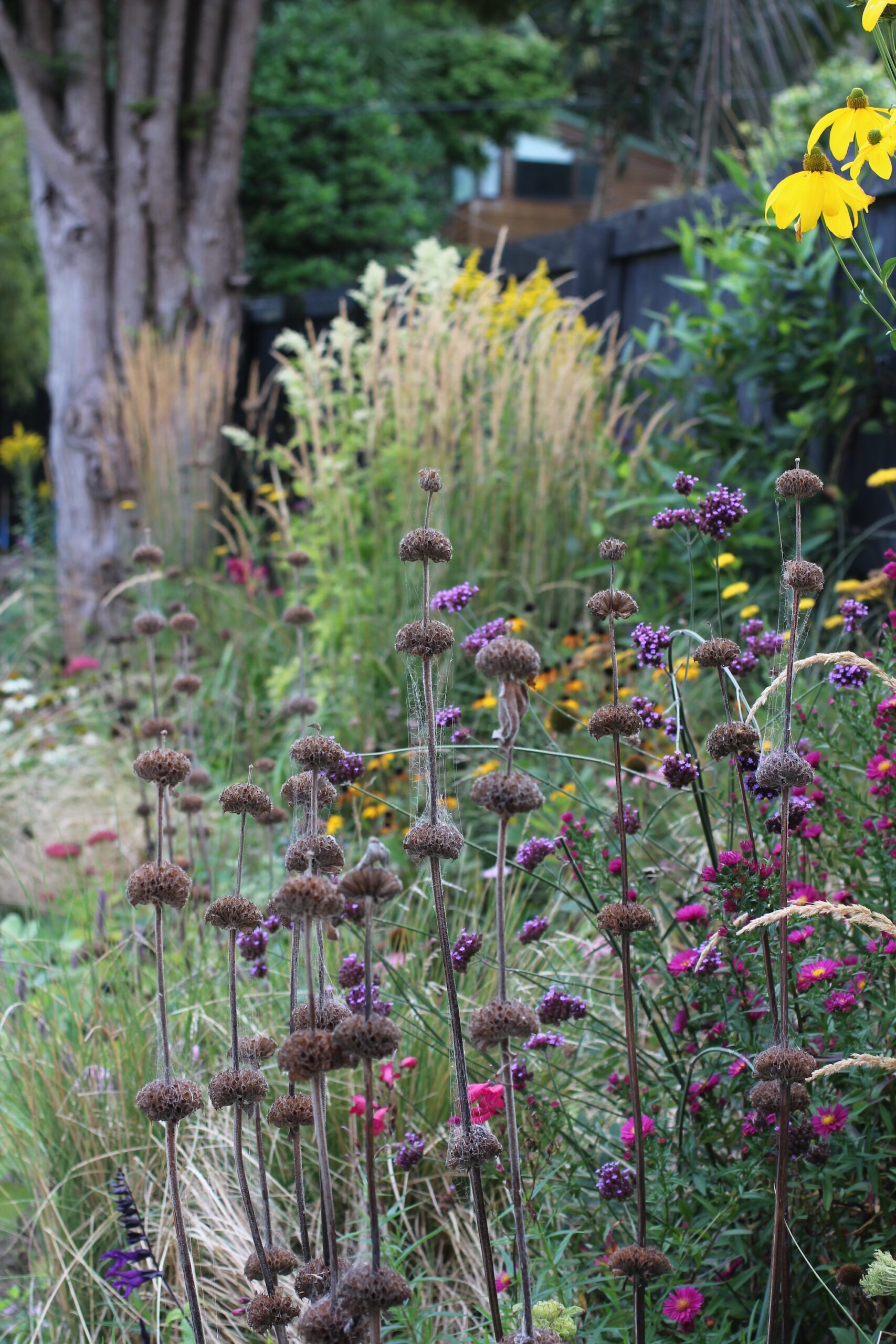
Phlomis russeliana (Turkish sage)
A no-fuss perennial – an evergreen, spreading groundcover that shoots up spikes of layered butter yellow flowers in the spring. Favoured by naturalistic designs because it’s early flowering and it provides year-long interest with its unusual and structural seedheads.
Phlomis in every stage looks brilliant – yellow in spring, fading to green in the summer, and by autumn the spires are burnt and blackened, adding a drama of decay.
This plant prefers full sun but will tolerate a bit of shade too. Incredibly drought resistant once established and all-round low maintenance plant that you can count on to cover bare soil and prevent gaps in the garden border.
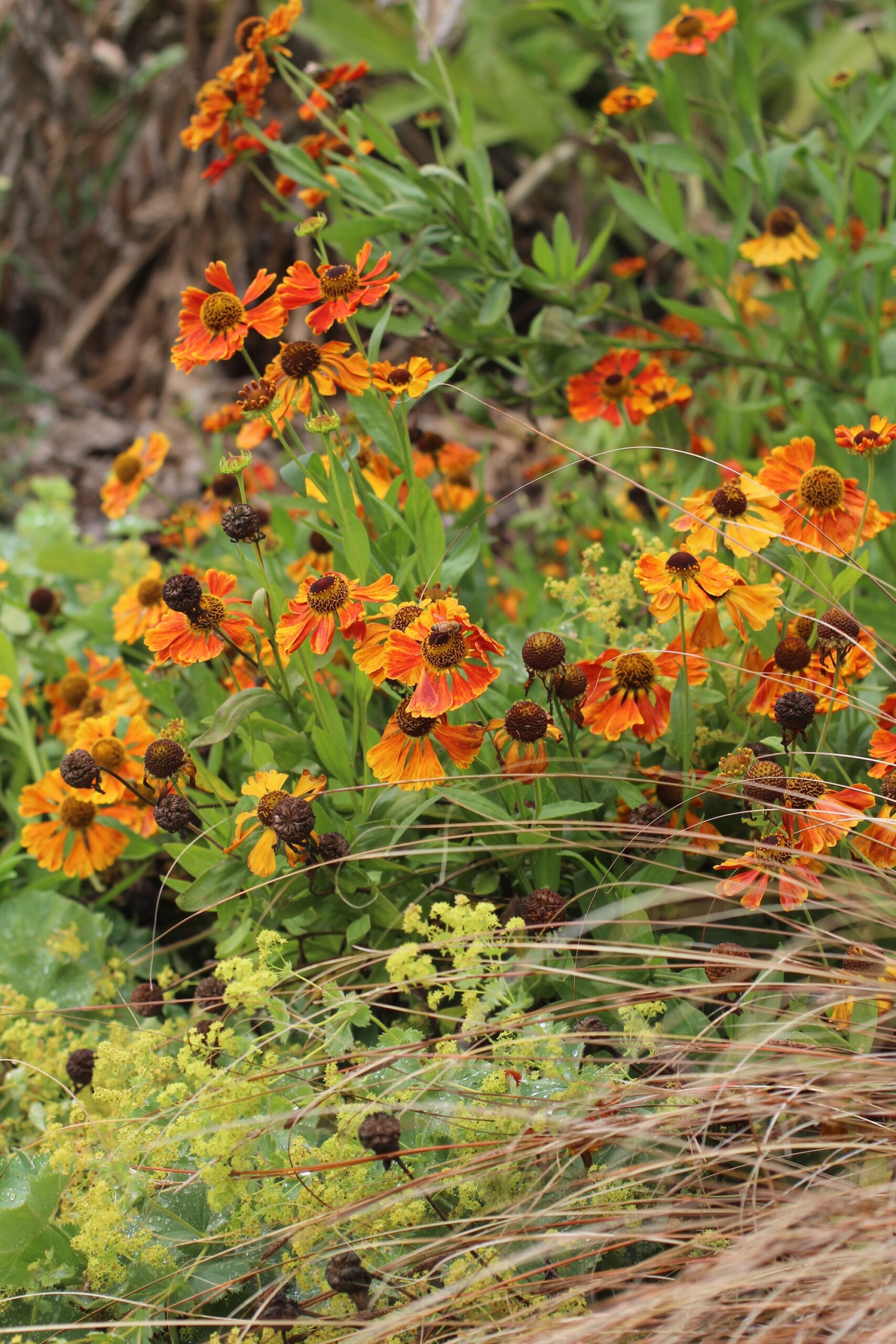
Alchemilla mollis (lady’s mantle) and Helenium planting combination
Alchemilla mollis (lady’s mantle)
A dependable and popular perennial that earns its place in the garden border. It forms a neat mound of foliage that acts as an excellent groundcover, helping to suppress weeds. The flowers are an attractive, acid lime colour that pair well in the spring with plants such as catmint or Helenium.
In the early spring, it is best to remove all the browned leaves to make way for new growth and maintain a tidy edge. Grows well in sun or partial shade but prefers a moist soil so make sure to mulch to prevent drying out over the summer months.
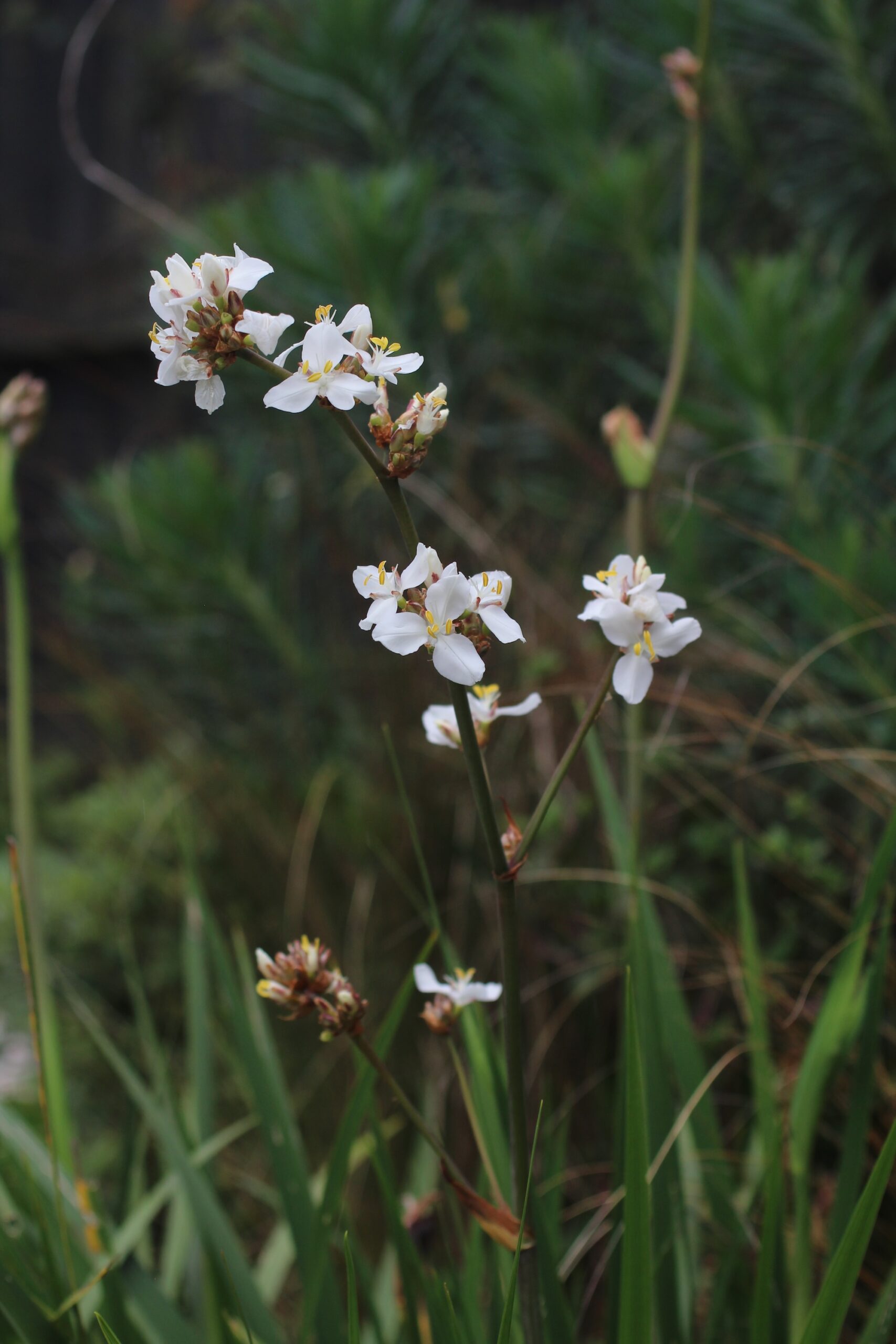
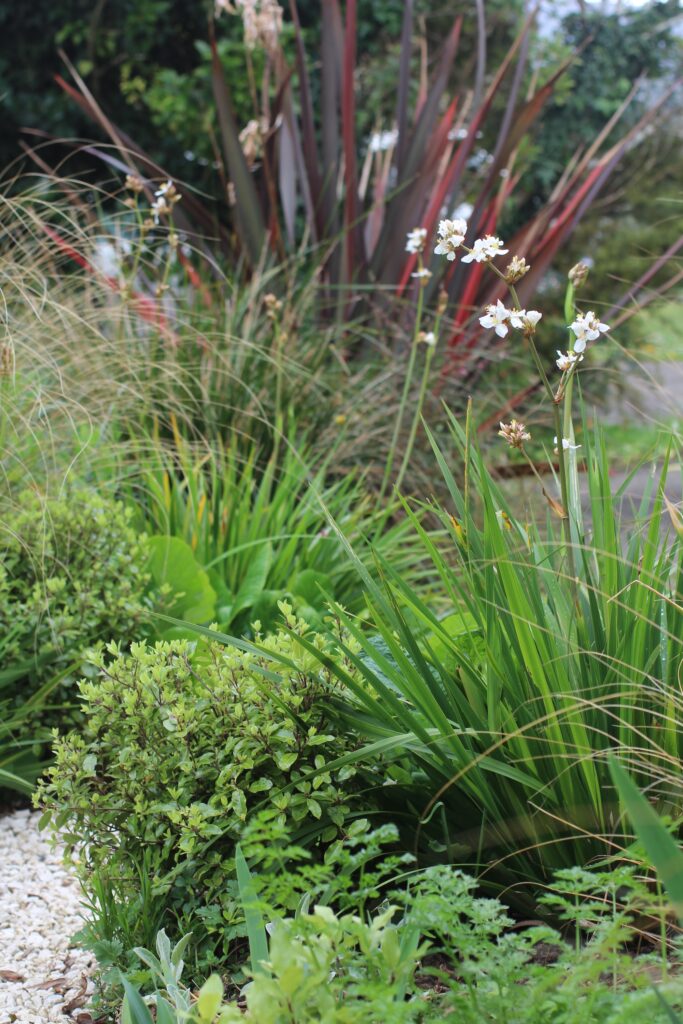
Libertia formosa
Every garden border needs a variation of textures and shapes to feel cohesive and well designed. Libertia formosa is an excellent choice because of its strappy, upright form which looks like flax but is far more compact and therefore suitable for the front of the border.
The plant produces dainty, star-shaped flowers in late spring followed by seed pods that extend its interest into summer and beyond. Pair with shrubs like Pittsoporum ‘Golf Ball’ or grasses like Chionochloa rubra (red tussock grass) for added structure, and with flowering perennials such as Persicaria, Aster or Japanese anemone for colour. This is a plant that should be grown in full sun for best results, but is adaptable to most soil types.
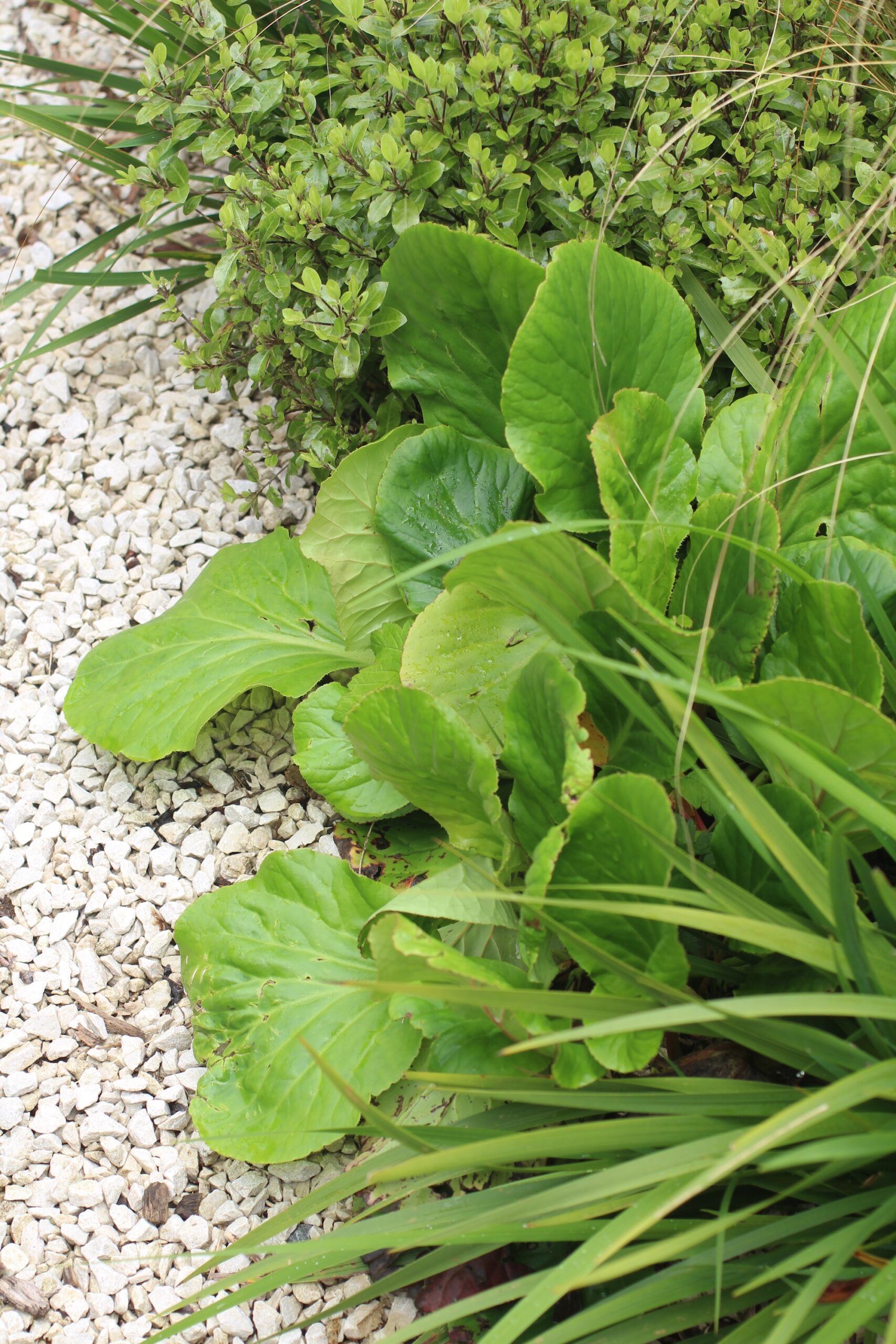
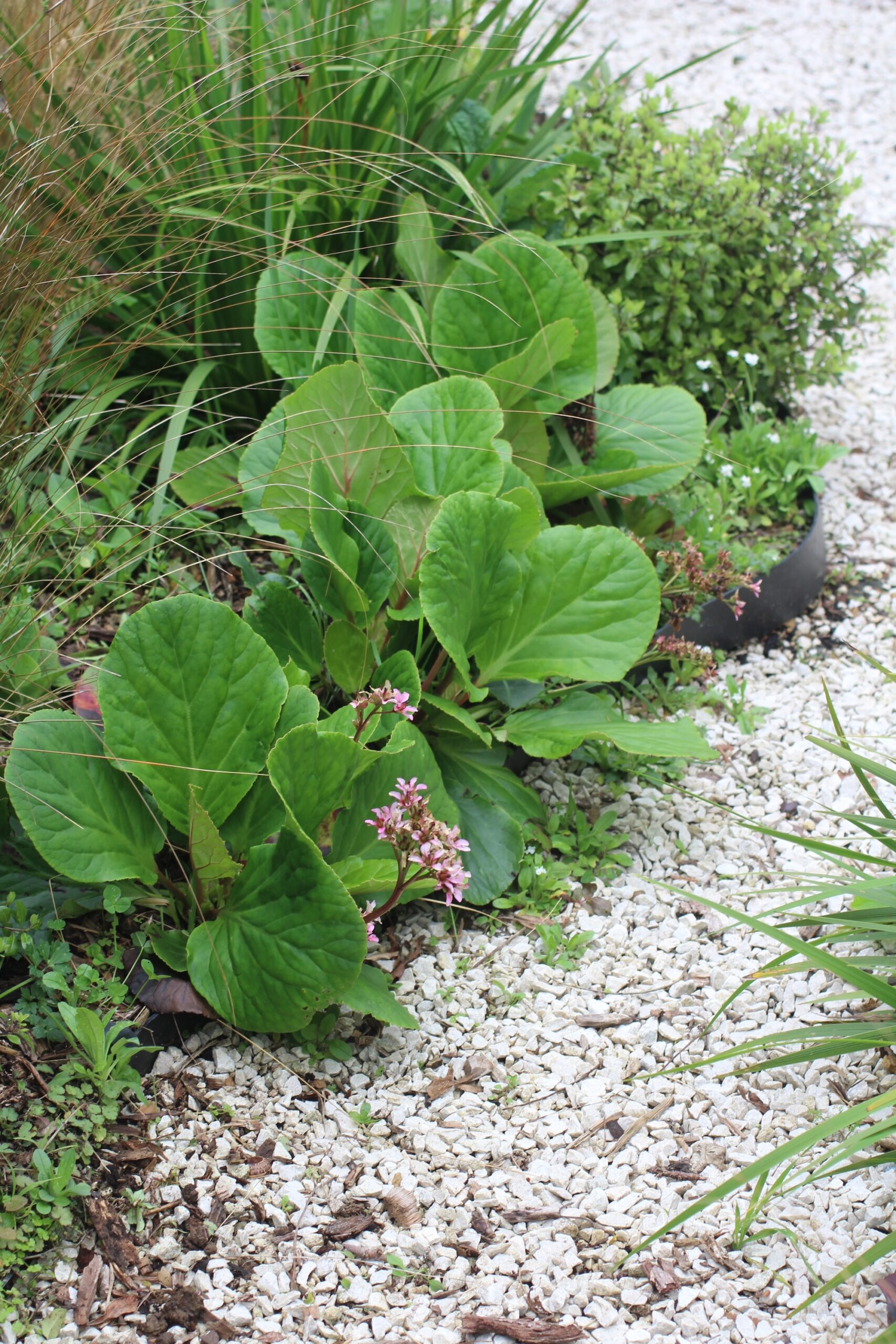
Bergenia
Bergenia
A long-lived and reliable evergreen that holds its place throughout the year as an interesting foliage plant. Useful for front of border planting or as edging along paths due to its large, paddle-like leaves. Interplant with sprawling groundcovers such as Pratia angulata, Cyclamen or ferns to create a structured woodland setting that is easy to maintain.
Once established, it requires little attention, apart from removing old or damaged leaves in spring. This plant is one for a shady spot and damp soils – it will grow well in full sun, but you may notice the leaves can be scorched.
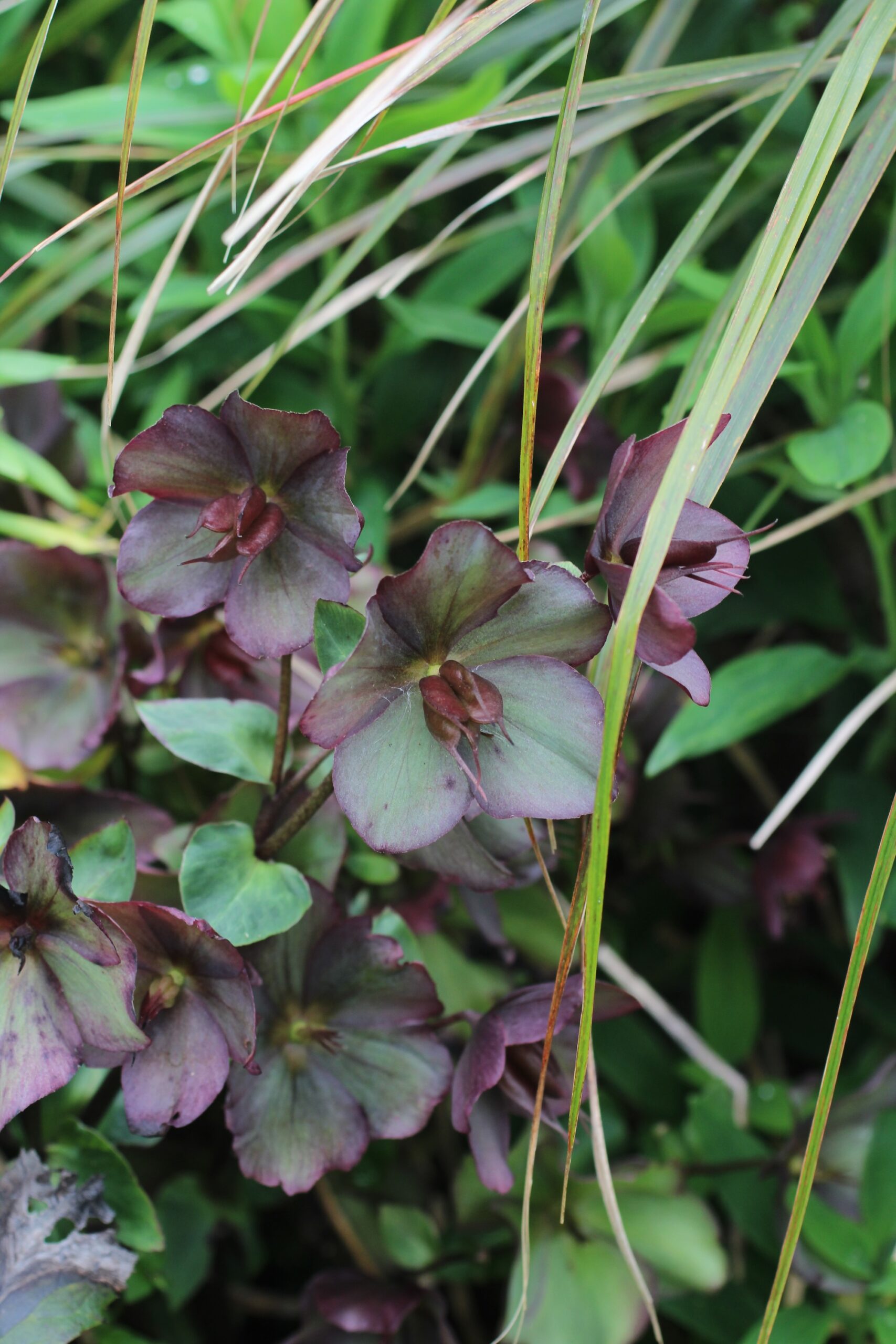
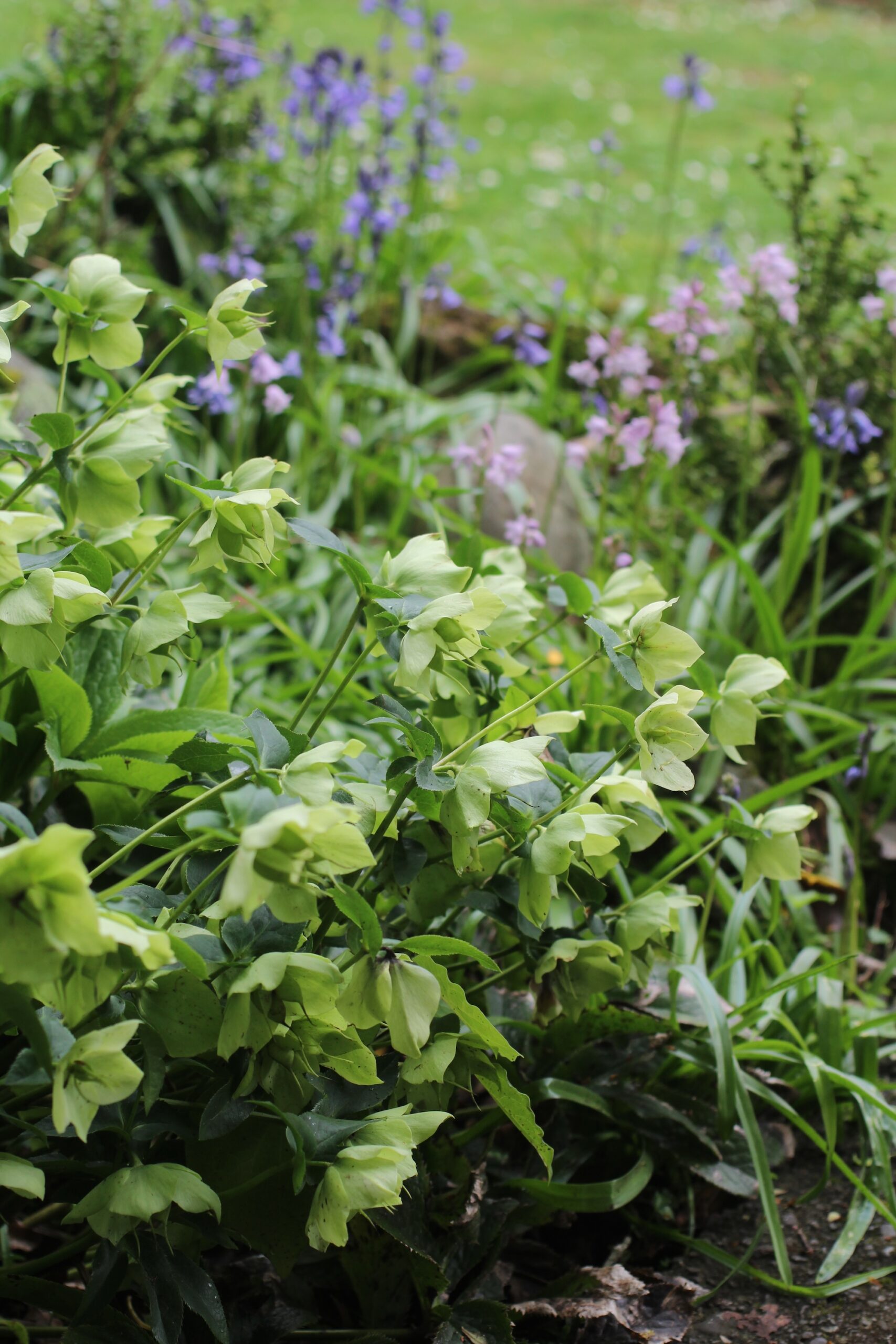
Helleborus orientalis (hellebores)
Hellebores (winter roses) are one of the earliest perennials to flower, often appearing in the late winter. It provides colour and structure through the colder months when little else is happening. But most importantly, the evergreen, clump forming foliage will fill gaps in the front of the border and prevent weeds from spreading.
A yearly prune in early winter is required when you see fresh growth budding at the base. Simply cut back old leaves as they will not drop on their own otherwise. Because this perennial prefers partial to full shade with rich, moist soils, it pairs particularly well with other woodland plants such as bluebells, rengarenga lily or daphne.

Geranium ‘Rozanne’ (cranesbill geranium), Astilbe and native grasses planting combination
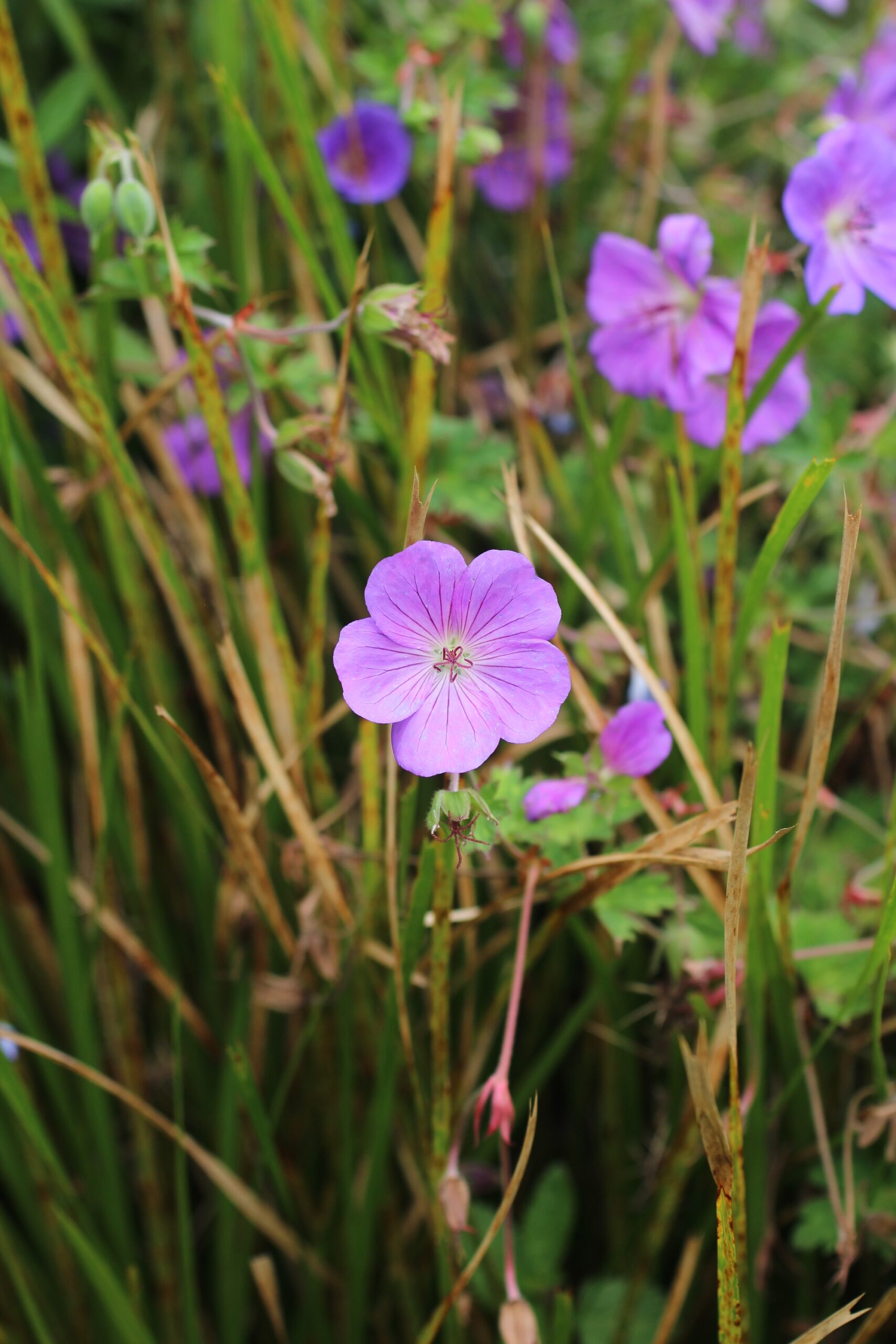
Geranium ‘Rozanne’ (cranesbill geranium)
Geranium ‘Rozanne’ (cranesbill geranium)
A long-flowering perennial that performs reliably from late spring through to autumn. Forms a spreading mound of attractive, tidy green foliage that helps fill gaps at the front of the border and suppress weeds even throughout the winter months. Plant in large clusters to create a solid block of colour for the garden and combine with interesting textures, such as Ligularia (tractor seat plant), flowering perennials such as Astilbes and Astrantia, or native grasses.
Responds well to a mid-season trim to encourage fresh growth and continued flowering. Grows best in full sun or partial shade and prefers moist soil so remember to mulch throughout the summer.
Festuca glauca (blue fescue)
A small ornamental grass valued for its fine texture and compact form which is useful for softening hard landscaping. It thrives in poor, dry soils and full sun, making it ideal for arid gardens. Pair with drought tolerant perennials like Verbena bonariensis, Agastache rupestrius ‘Apache sunset’ or Achillea millefolium ‘Terracotta’ for a low maintenance border.
Just make sure not to over fertilise or water as this could cause the plant to become floppy. If subjected to an overly wet winter, you may find the leaves become sodden and a clean cut back will make way for fresh growth in spring.
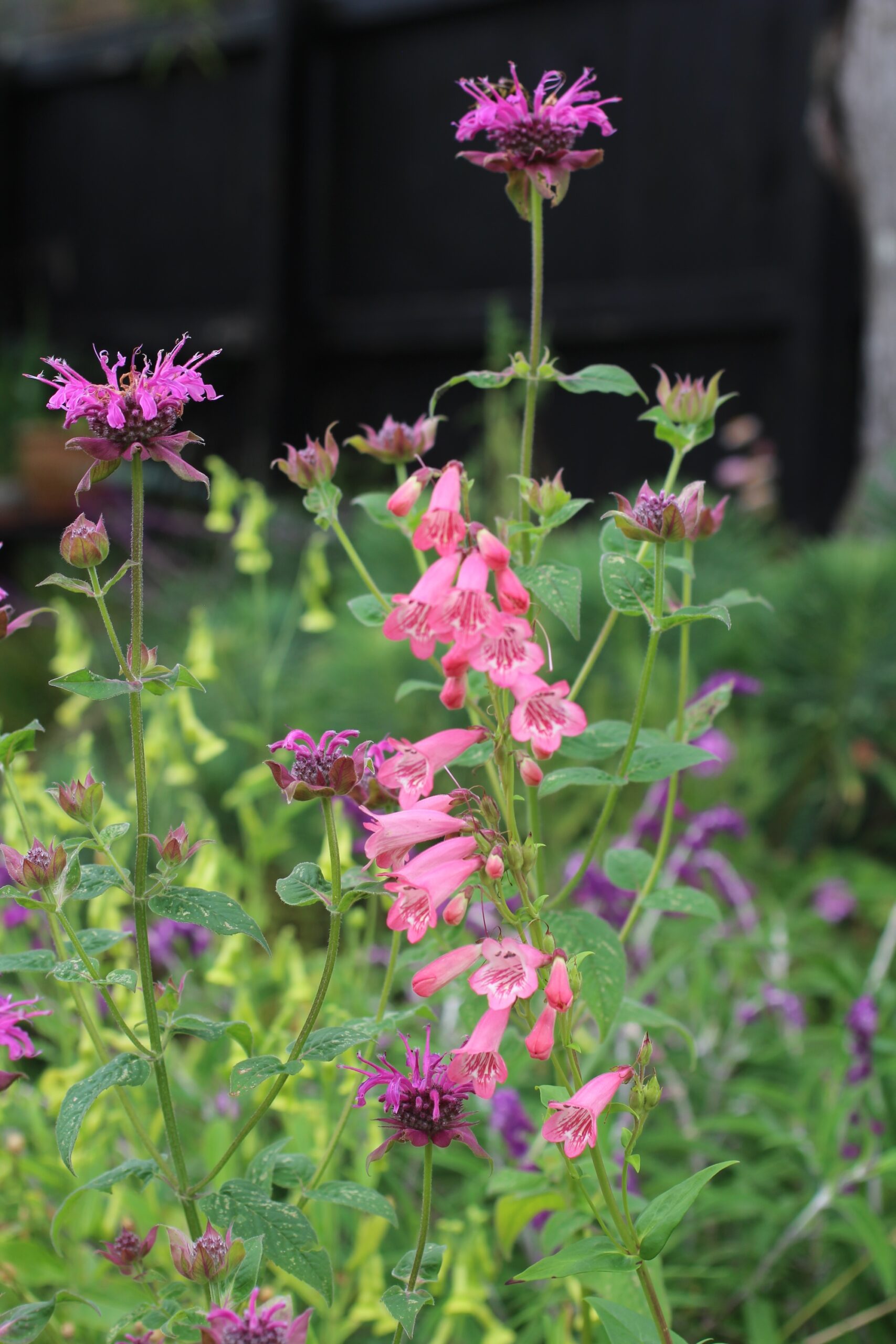
Penstemon
Penstemon
An old-fashioned perennial that will always deserve a space in the border due to its evergreen foliage and consistent flowering from late spring through to autumn. It fills space quickly and works well at the front of a border if you keep it trimmed.
Because it is so fast-growing, you run the risk of letting it become leggy or woody, so a deep cut back twice a year may seem drastic but it is necessary to maintain a tidy, compact shape.
It blends easily with other perennials like Nicotiana langsdorffii (Tabacco plant), Rudbeckia (black eyed susan) or Monarda (bee balm). Look for varieties such as Garnet, Blackbird or Appleblossom. Prefers full sun, free-draining soil. Avoid wet or boggy soils, particularly in the colder months.
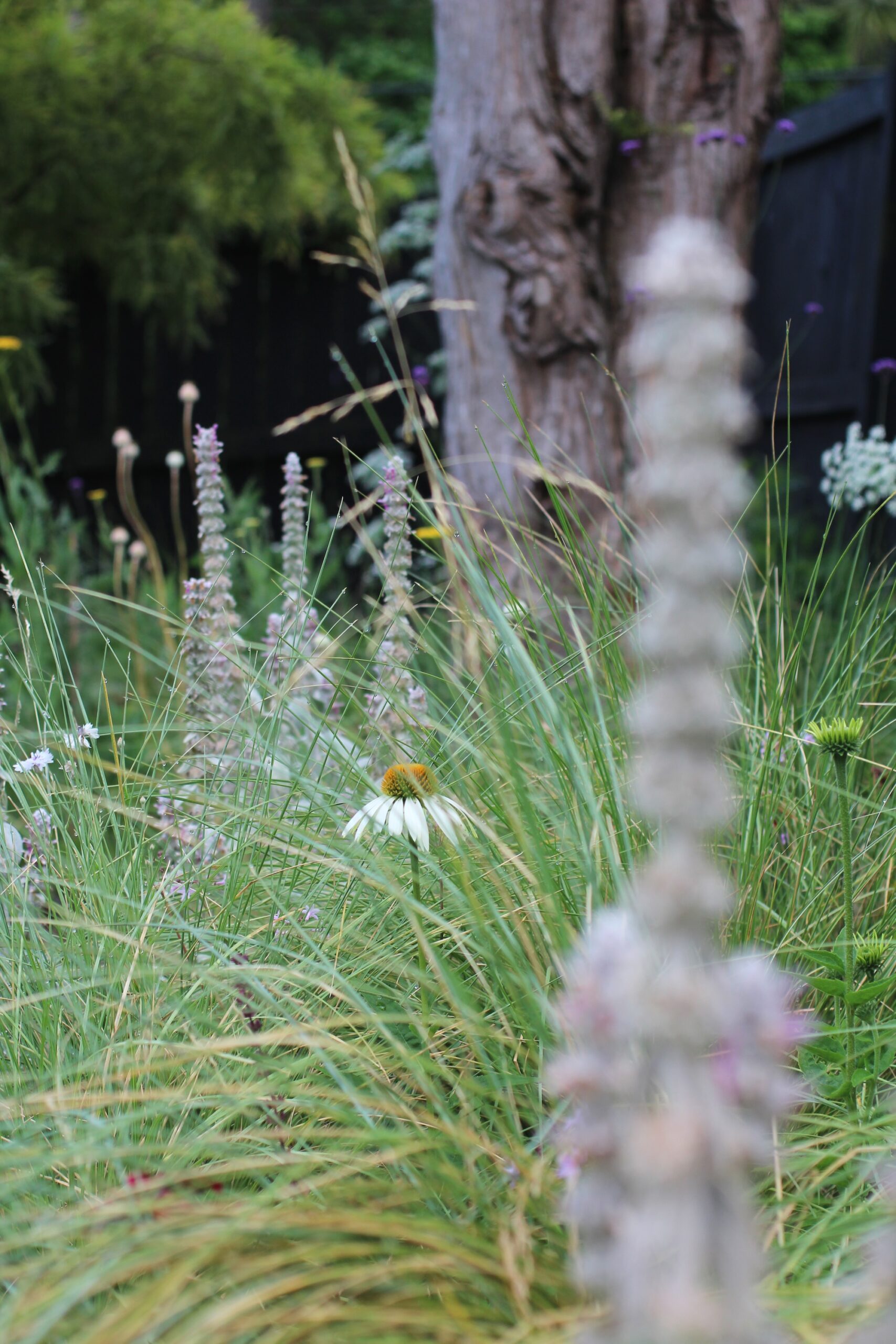
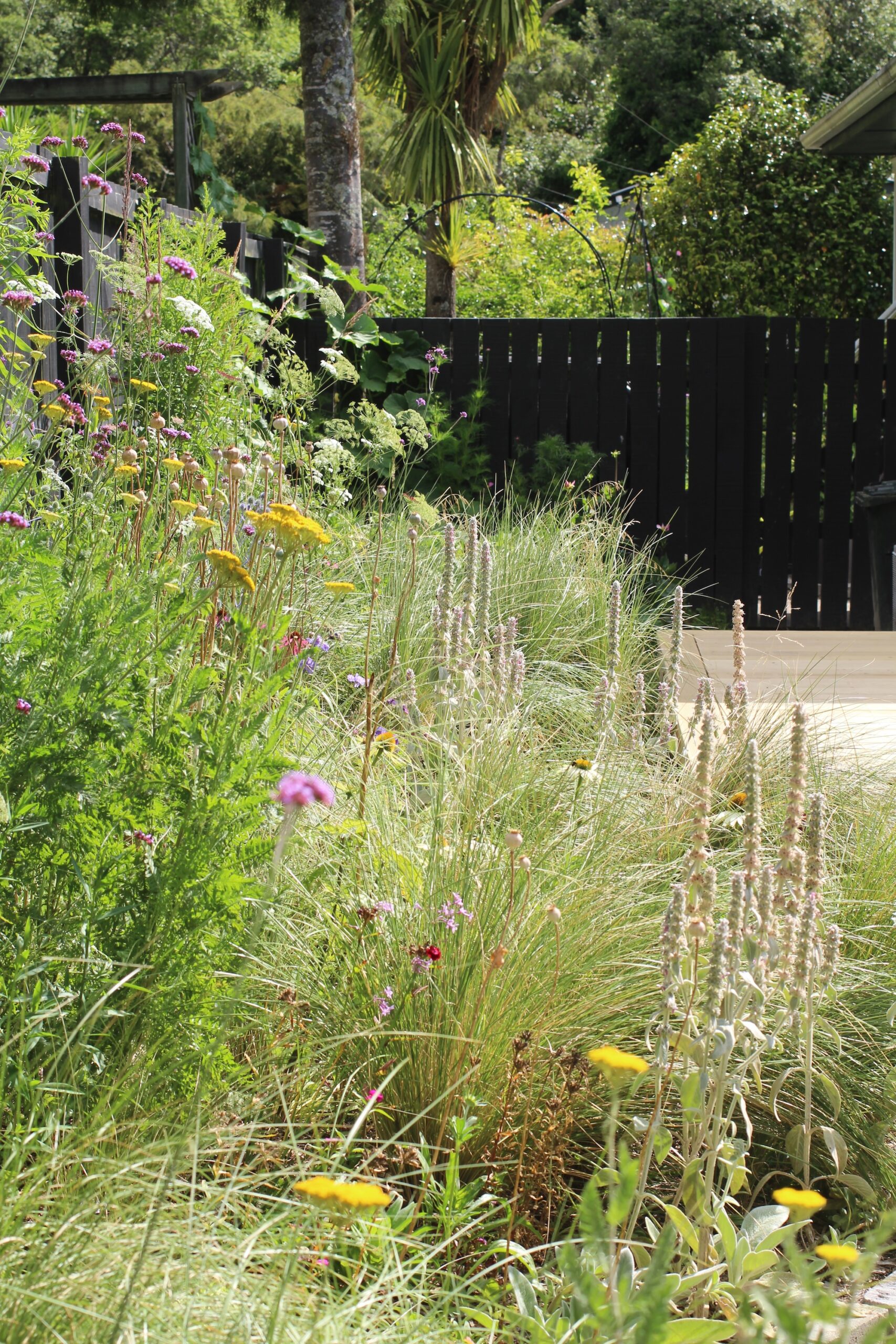
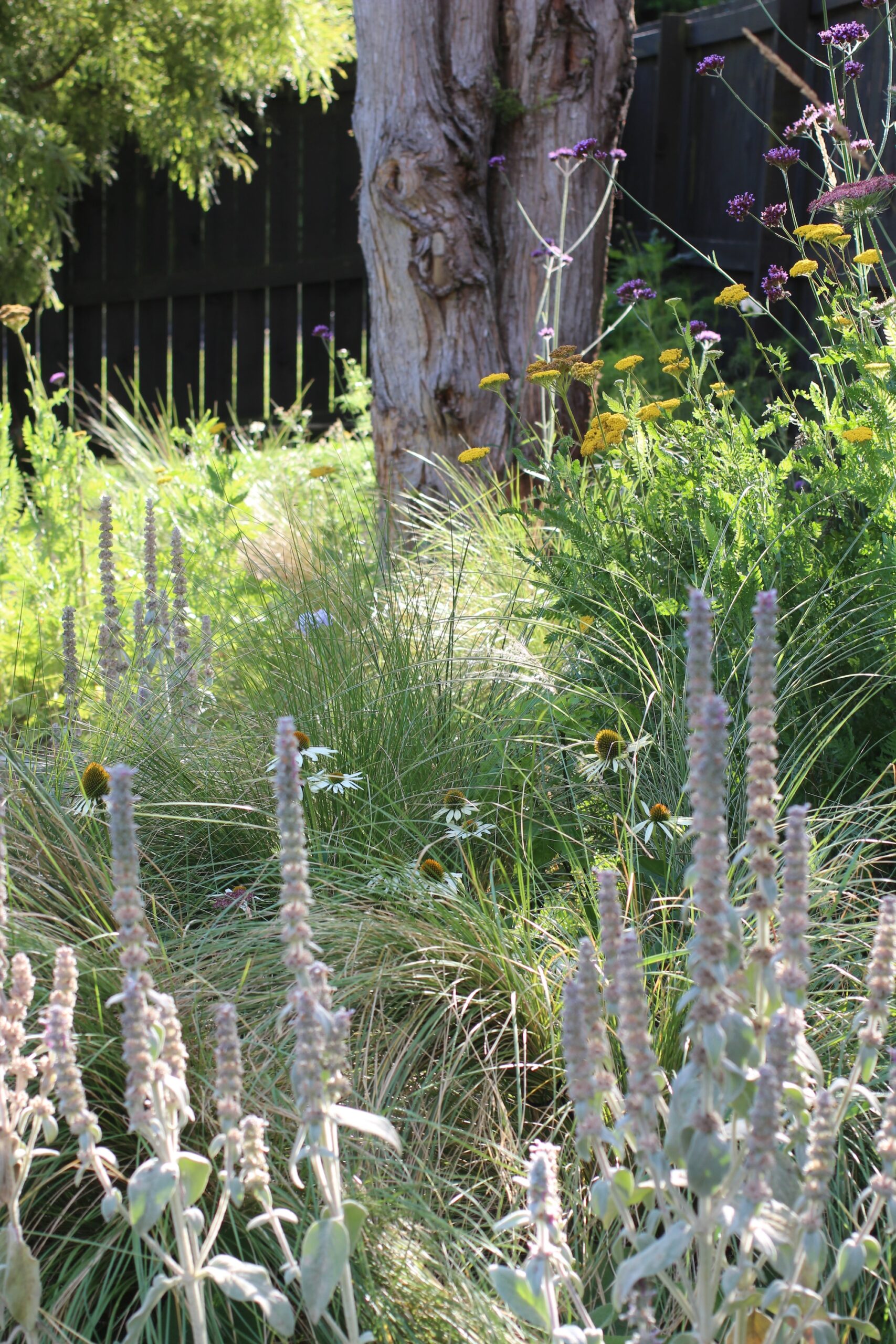
Stachys byzantina (lamb’s ear)
An evergreen groundcover that forms a dense mat, ideal for edging and weed suppression. The foliage has a striking silver tone, which creates contrast within the garden and looks particularly attractive paired with rusty, brown or bleached tones. Pair with native grasses such as Anemanthele lessoniana (wind grass), Sedum ‘Autumn Joy’ or Echinacea purpurea.
The purple spike shaped flowers in the summer are a bonus, and attract many pollinators to your garden. Just remember to remove spent flower stems after blooming to keep growth compact and to prevent self-seeding. Enjoys full sun and free-draining soil. Once established, it is highly tolerant of drought and poor soils.
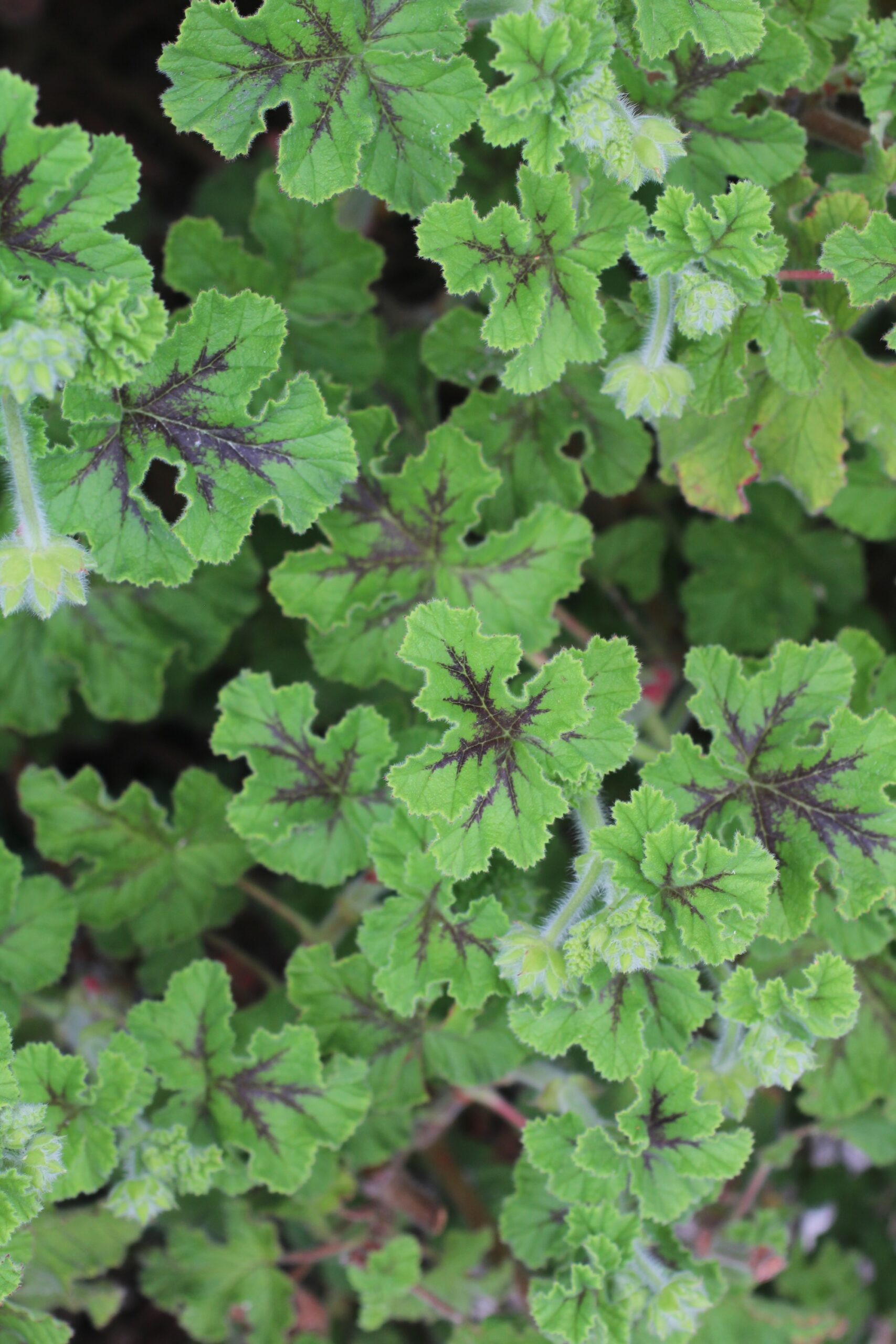
Pelargonium (scented geranium) ‘Chocolate mint’
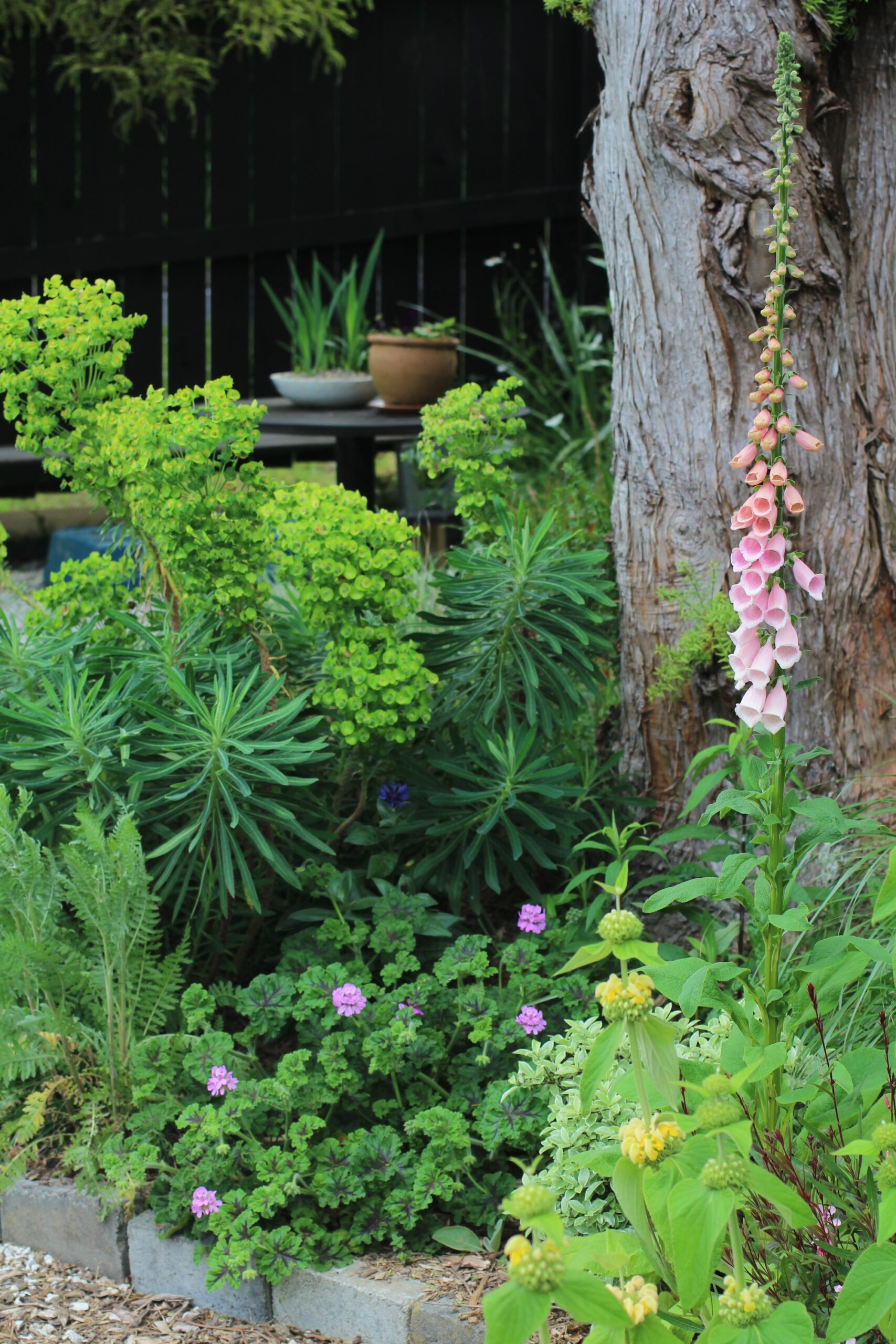
Pelargonium (scented geranium) at the front of a garden border
Pelargonium (scented geranium)
Grown for its scented foliage as much as its flowers, this perennial performs best at the front of a warm, sheltered border. It can be good for filling gaps underneath trees which still receive sun, with the trees protecting them from any frosts over the winter. The trick with scented geranium is to prune regularly as this will encourage bushy growth and stops the plant from becoming woody.
The hardiest varieties for New Zealand gardens are the ‘Chocolate Mint’ or ‘Attar of Roses’. Pair with perennials such as Euphorbia, whose chartreuse flowers time perfectly with the magenta blooms of the Pelargonium.
Prefers full sun, free-draining soil and the only fuss is to protect them from the frost – planting under the canopy of a tree can help with this.
–
Don’t fret if you find yourself filling gaps in the border after a bitter winter. While it can feel like your hard work has been undone, it is also an opportunity to reassess and strengthen the overall planting scheme in your garden.
Always consider your soil type, sun exposure and climate when choosing replacement plants. Opt for hardy, evergreen perennials, shrubs or grasses for the front of the border that will hide the mess and limit the weeds. A thorough plan now will help to avoid the heartbreak next spring and restore the border ahead of summer.


